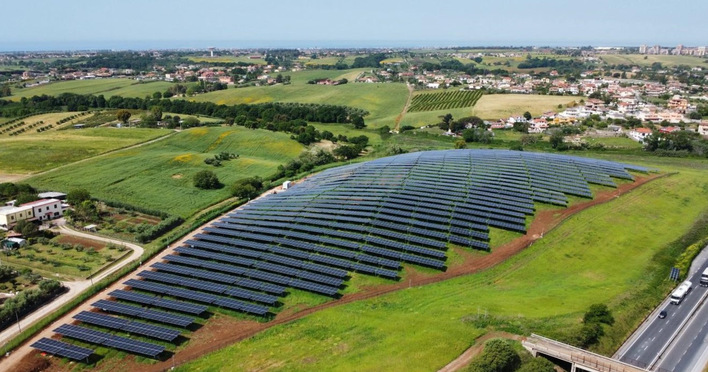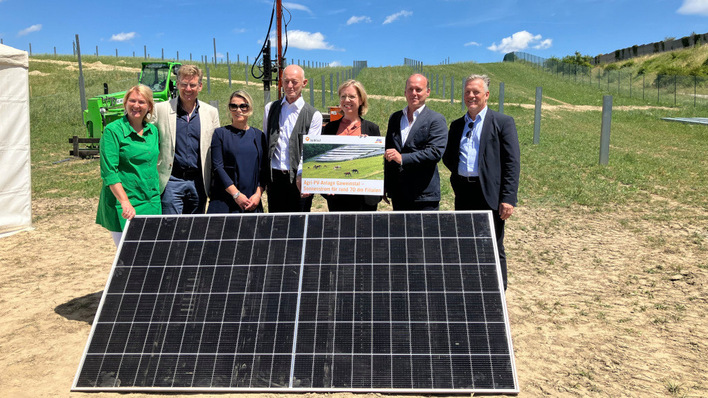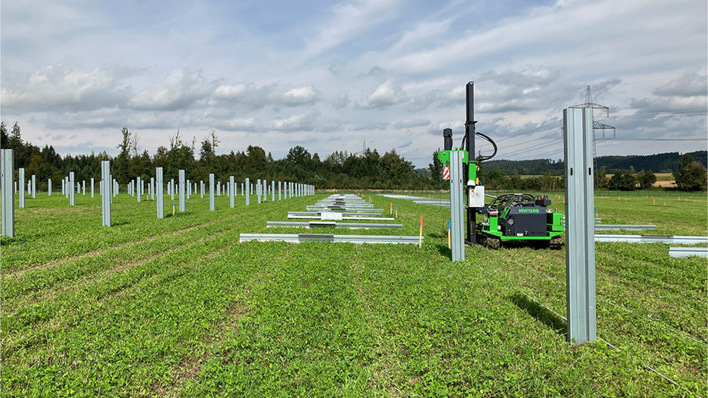Scientists at the Fraunhofer Institute for Solar Energy Systems (ISE) together with VOEN Vöhringer, a supplier of weather protection systems for agriculture, have developed lightweight photovoltaic modules. Farmers can integrate them directly onto structures for their hail protection nets installed as weather protection for special crops such as fruit trees or berry bushes. Conventional modules are unsuitable for this, due to the limited load-bearing capacity of these structures. They are far too heavy to be mounted on the steel systems erected for hail protection nets. This would require a separate substructure.
First demonstration system built
The two project partners are currently trialling their new development on a cherry orchard in the south of Germany. The demonstration unit covers two rows of cherry trees with a length of around 40 metres. For this, they use the existing substructures that were originally erected for the protection nets and foils. The installers attached the modules with its weight of less than five kilograms, to these. The project team monitors the electricity yield of the system and the harvest yield of the cherry trees throughout the year and analyses the data at the end of 2025.
PV from field and barn: Our special for the dual harvest on farms
Solutions developed for installation
With the modules, it is possible to install 420 kilowatts per hectare. ‘The new concept addresses two factors that make agri-PV systems more expensive than ground-mounted photovoltaics: the higher costs for constructing the mounting structure and for installing the solar modules," explains Felix Basler, project manager at Fraunhofer ISE. ‘In addition to developing the low-cost lightweight modules, we have designed and tested various solutions for the simple installation of the modules on traditional weather protection systems in special crop cultivation."
Agri-PV concept tailored to agriculture
The solution is perfect in particular for retrofitting existing protection systems. "Installation is extremely simple as a new build or retrofit solution," says Leo Vöhringer, project manager at VOEN. "It was important to us to adapt an agri-PV concept to the practice of fruit growing and not the other way round. The established crop protection against the weather and other damaging influences remains in place with our concept."
Study highlights potential of UK agri-PV
Wrapping up foils and hail protection nets
The system developed by the two project partners has an additional advantage. At times of the year when the original weather protection is not needed, the farmer can wrap it beneath the solar modules and stow it away. This improves the microclimate under the protective structure, since the field is not covered completely anymore. Air can circulate better. At the same time, the modules provide slight shading and thus protect the crops from excessive sunlight. (su)








